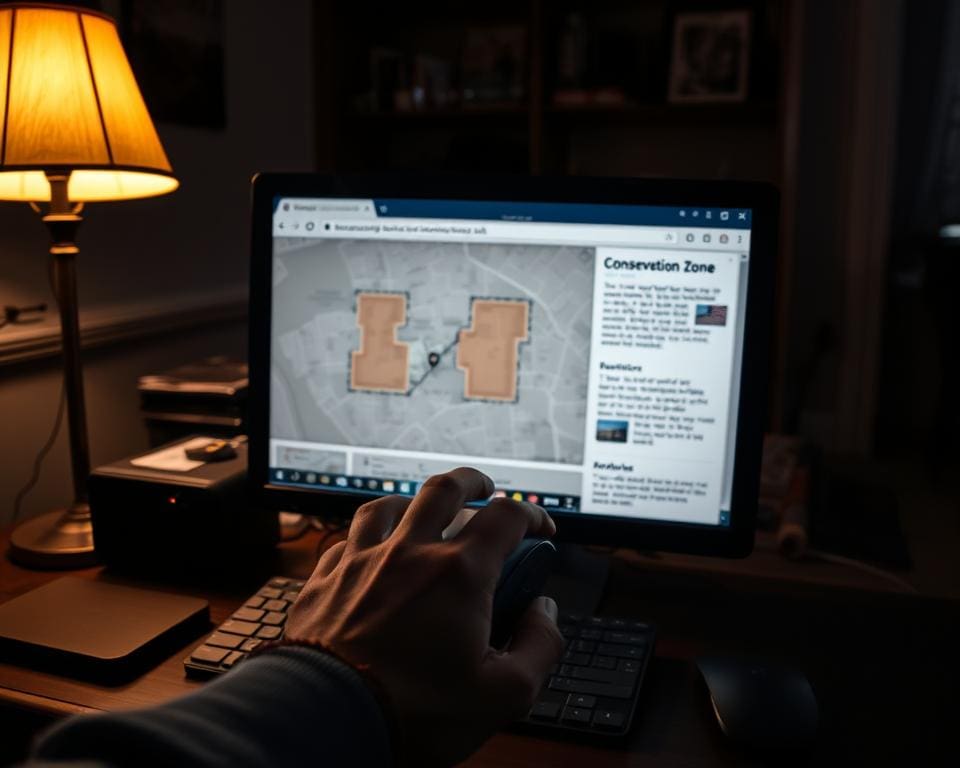Understanding whether your home is situated within a conservation area is vital for responsible property ownership. A conservation area signifies a locale appreciated for its historical or architectural value, often influencing planning decisions and permissible modifications. To embark on a successful conservation area search, it’s essential to conduct thorough research, ensuring compliance with local regulations that protect these valuable sites. Recognising the significance of your property’s location can inspire thoughtful stewardship and appreciation for the cultural heritage it represents.
Understanding Conservation Areas
Conservation areas play a vital role in protecting the character and heritage of communities. Understanding these zones involves grasping the criteria involved in defining conservation areas. Local authorities often assess architectural features, historical significance, and the overall community value when designating these areas.
What Defines a Conservation Area?
Several factors contribute to the definition of a conservation area, including:
- Architectural styles: Unique design elements and historical architecture serve as a hallmark of conservation areas.
- Historical context: The presence of buildings that reflect significant events or eras enhances the cultural narrative.
- Community significance: Areas that foster community identity and spirit are often prioritised for conservation.
Importance of Conservation Areas in Urban Planning
Conservation areas significantly influence urban planning strategies. Their preservation often leads to:
- Enhanced community well-being: Maintaining heritage encourages social cohesion.
- Sustainable development: Thoughtful urban planning that incorporates conservation principles can promote environmental sustainability.
- Tourism opportunities: Well-preserved conservation areas attract visitors, benefiting local economies.

How Do I Find Out If My House Is In A Conservation Area
Determining whether your property resides within a conservation area is an essential aspect of property research. Begin by navigating to your local council’s website, as councils maintain detailed maps and specific information related to designated zones. These resources often include planning documents that outline conservation guidelines and regulations.
Contacting your local authority directly can yield valuable insights. Engaging with planning officers can clarify any uncertainties regarding the status of your property within a conservation area. This personal interaction not only provides direct answers but can also establish a relationship with local planning officials, who can assist you in future property developments.
Utilising online databases is another effective way to verify your property’s status. Many local councils provide access to interactive mapping tools that display conservation areas. This method offers a visual representation, making it easier to determine the boundaries affecting your home.
Understanding your property’s designation can influence decisions regarding renovations or expansions. Being proactive in this property research empowers homeowners to make informed choices while respecting local heritage and regulations.
The Process of Conducting a Conservation Area Search
Undertaking a conservation area search can seem daunting, yet it is vital for homeowners and prospective buyers wishing to understand their property’s significance. Knowing how to effectively conduct this search opens doors to invaluable information about your home and its surroundings.
Where to Start Your Search
Begin your search with your local planning authority. They maintain detailed registers and maps showcasing conservation areas. Many councils facilitate easy access to this information, encouraging citizens to engage with local heritage. Online platforms offered by these authorities simplify the process of locating conservation areas relevant to your address.
Utilising Local Authority Resources
Local authority resources significantly enhance your ability to perform informed property assessments. Many councils provide digital tools, including interactive maps and searchable databases, where you can discover the status of any property. Additionally, local archives and libraries serve as treasure troves of historical documents which may enrich your understanding of conservation policies that affect your locality.
Checking for Protected Buildings Near Me
Identifying protected buildings is essential when exploring conservation areas. Knowing the presence of these structures can guide homeowners through renovations and planning processes, ensuring compliance with local regulations. The following sections illuminate the significance of local listings and how they facilitate a thorough listed properties search.
The Role of Local Listings in Conservation Areas
Local listings provide crucial information about protected buildings near me. Each local authority maintains records of sites that have been designated as significant to heritage and culture. These listings not only highlight architectural features but also outline any specific restrictions that aim to preserve the historical character of the buildings. Engaging with local listings empowers homeowners to make informed choices when considering alterations to their properties.
Accessing Information on Listed Properties
To find information on listed properties, stakeholders can turn to various resources provided by local councils. Most councils offer online databases that facilitate a seamless listed properties search. Engaging with these databases allows individuals to discover protected buildings nearby, and understand any limitations set forth regarding alterations or repairs. These insights enhance the ability to navigate the conservation area while preserving the essence of its character.
Recognising Historic Preservation Zones
Historic preservation zones play a crucial role in maintaining the cultural heritage of our communities. By recognising preservation areas, individuals can appreciate the significance of these zones in safeguarding architectural integrity and historical character. These zones often align with conservation areas, as both aim to protect neighbourhoods that hold historical value.
Understanding the criteria that establish historic preservation zones is essential for property owners. Regulations often dictate what modifications may occur within these areas, ensuring that any alterations blend seamlessly with the original aesthetics. Individuals living within these zones should be informed about their rights and responsibilities, in order to foster a sense of community and responsibility towards heritage preservation.
In addition, historic preservation zones often provide opportunities for educational and cultural events that promote the importance of history and architecture within the community. This engagement can lead to increased awareness and appreciation for the built environment, inspiring residents to play an active role in recognising preservation areas.
Understanding Heritage Site Boundaries
The determination of heritage site boundaries forms a crucial part of urban planning and preservation. Recognising where these boundaries lie can significantly influence property ownership implications for homeowners. Properties that fall within these designated areas are met with specific regulations aimed at protecting their unique cultural, historical, and architectural characteristics.
How Heritage Site Boundaries Affect Property Owners
For property owners, being located within heritage site boundaries can lead to stricter planning controls. Owners must consider regulations surrounding alterations, extensions, and maintenance of their properties. Understanding these restrictions is vital, as they can affect property value and marketability.
Key Characteristics of Heritage Sites
Heritage sites exhibit distinctive characteristics that contribute to their significance. These may include:
- Architectural integrity – Preserving the original design and materials used in construction.
- Historical context – Connection to historical events or figures that shaped the community.
- Community significance – The role the site plays in the cultural identity and social fabric of the area.
Utilising Architectural Heritage Lookup Tools
Access to architectural heritage lookup tools significantly empowers homeowners seeking to understand their property’s historical context. Numerous online resources are available, catering to individuals interested in architectural heritage. These tools provide vital information about listed buildings and conservation areas, enhancing community engagement and preservation efforts.
Online Resources for Architectural Heritage
Websites operated by conservation groups and local councils serve as incredible online resources for those interested in architectural heritage. They typically offer databases of listed buildings, preservation guidelines, and current conservation initiatives. Engaging with these platforms allows property owners to gain insights into treasured local architecture and its importance in the community.
How to Interpret Heritage Listings
Understanding heritage listings involves familiarising oneself with the terminology and classifications used within the planning system. Listings often include details on the historical significance of a property, architectural features, and any regulations surrounding alterations or renovations. By grasping this information, homeowners can confidently navigate potential renovation projects while respecting their building’s heritage value.
The Implications of Being in a Conservation Area
Living in a conservation area comes with unique responsibilities and privileges. The implications of conservation areas are significant for homeowners, who must navigate specific planning restrictions that affect their properties. These restrictions aim to safeguard the character and historical significance of the area, ensuring that any changes contribute positively to the environment.
Homeowners may find that simple tasks, such as painting or installing new windows, require approval from the local planning authority. These measures are in place to maintain the aesthetic value and integrity of the neighbourhood. It is crucial for residents to remain informed about these regulations to avoid potential disputes with planning authorities.
Understanding the implications of conservation areas not only helps in compliance but also fosters a sense of pride in preserving local heritage. Engaging with the guidelines can lead to better planning decisions that enhance rather than detract from the surrounding community.
Engaging with Local Planning Authorities
Open lines of communication with local planning authorities play a pivotal role in navigating conservation area inquiries. Establishing a rapport with officials can not only clarify the regulations surrounding your property but also provide insight into potential development projects that may affect the character of your neighbourhood. Engaging directly with planning authorities allows property owners to ask pertinent questions, seek advice, and remain informed about any upcoming changes to local planning policies.
Furthermore, proactive involvement with the planning department fosters a sense of community stewardship. By participating in discussions regarding conservation areas, property owners can help to uphold the unique architectural identity and historical significance of their locality. Understanding the nuances of conservation area regulations can empower residents to make informed decisions while ensuring that any necessary improvements align with the community’s goals.
Ultimately, fostering a positive relationship with local planning authorities is essential. It not only aids in preserving the distinctive character of your area but also enhances collaboration towards achieving a sustainable future. Engaging with planning authorities is not merely about compliance; it’s a vital step in shaping a thriving community that respects its heritage while embracing responsible development.









